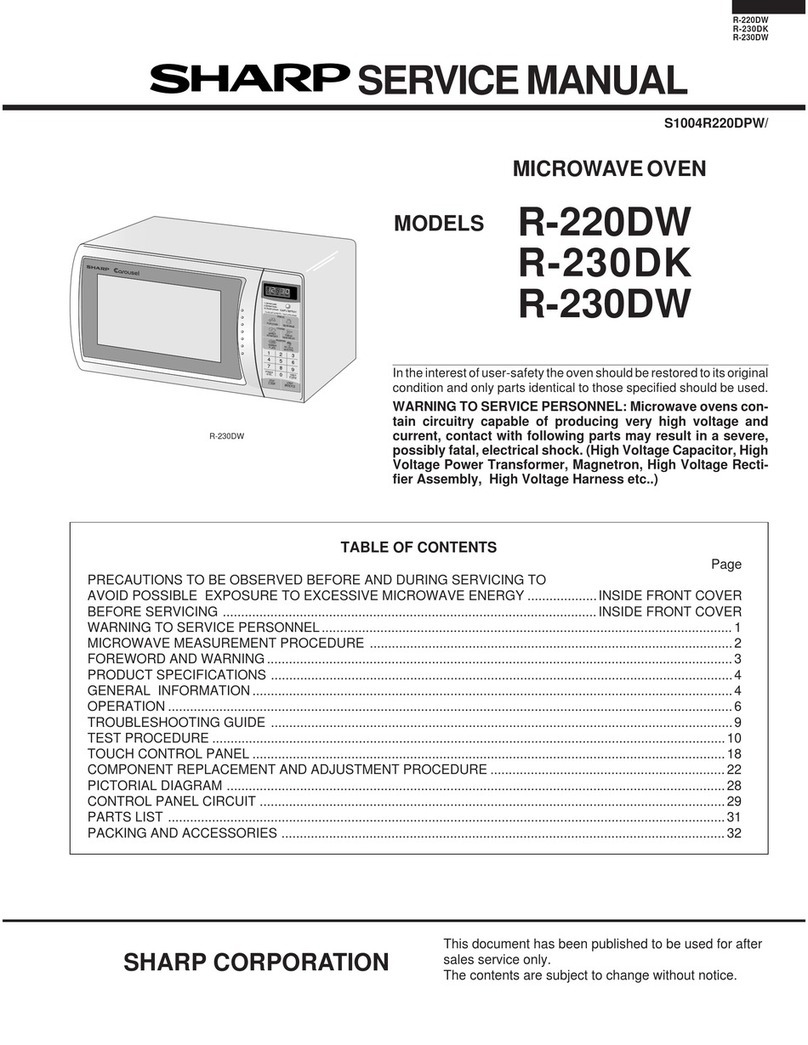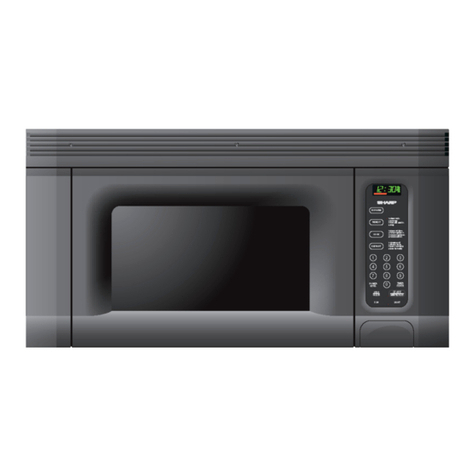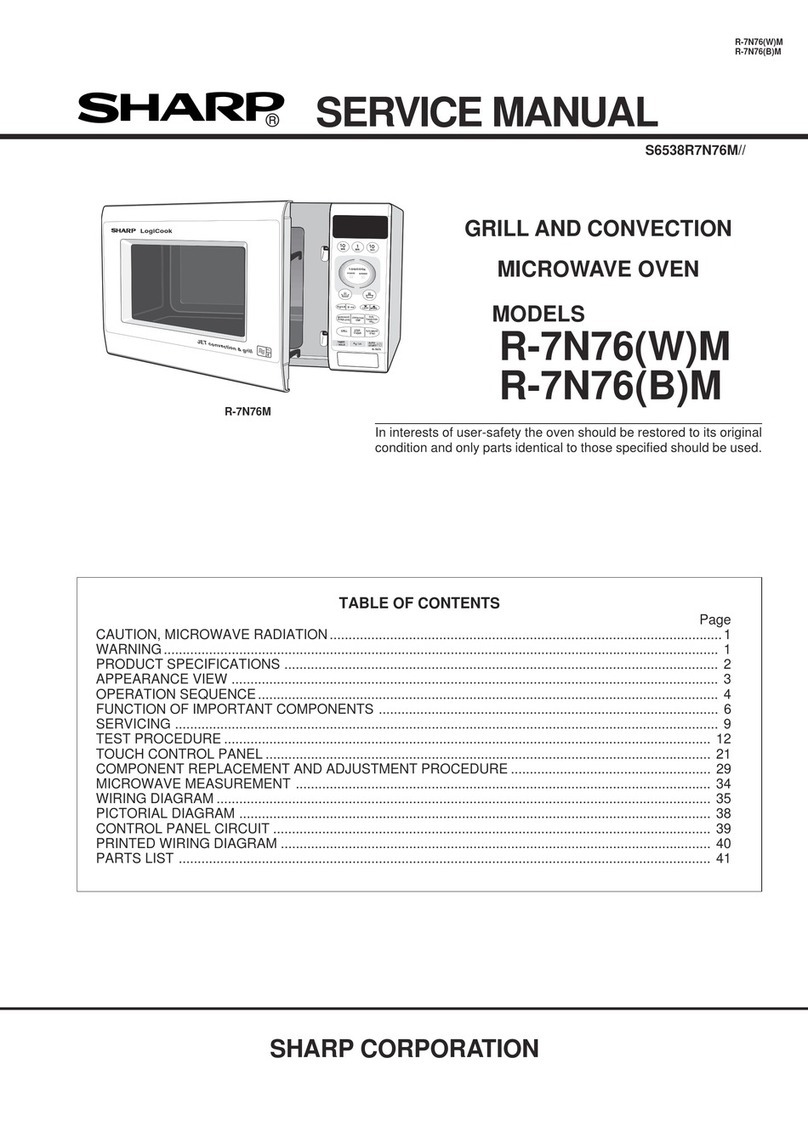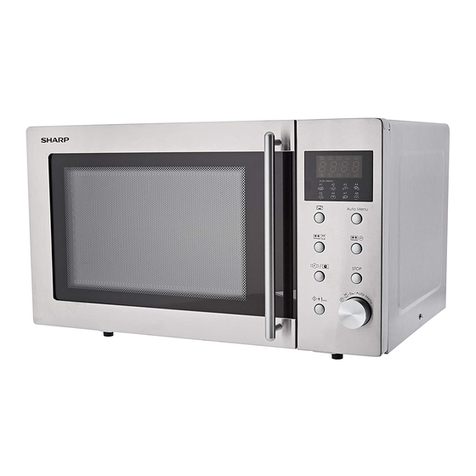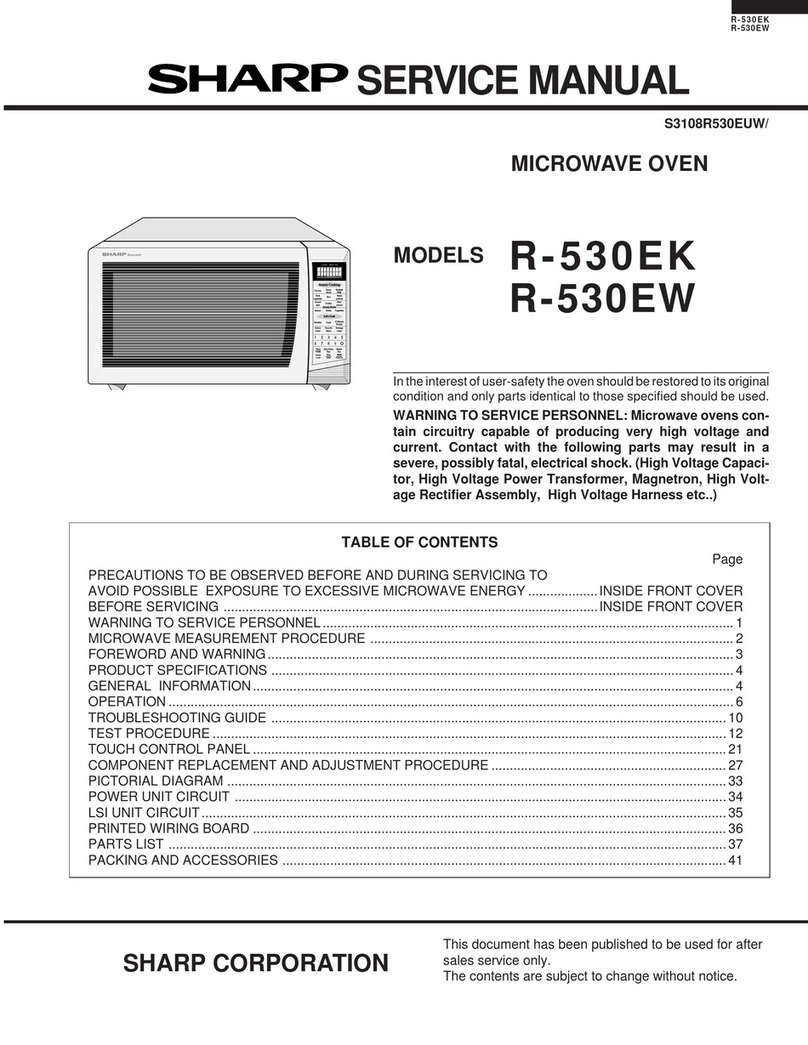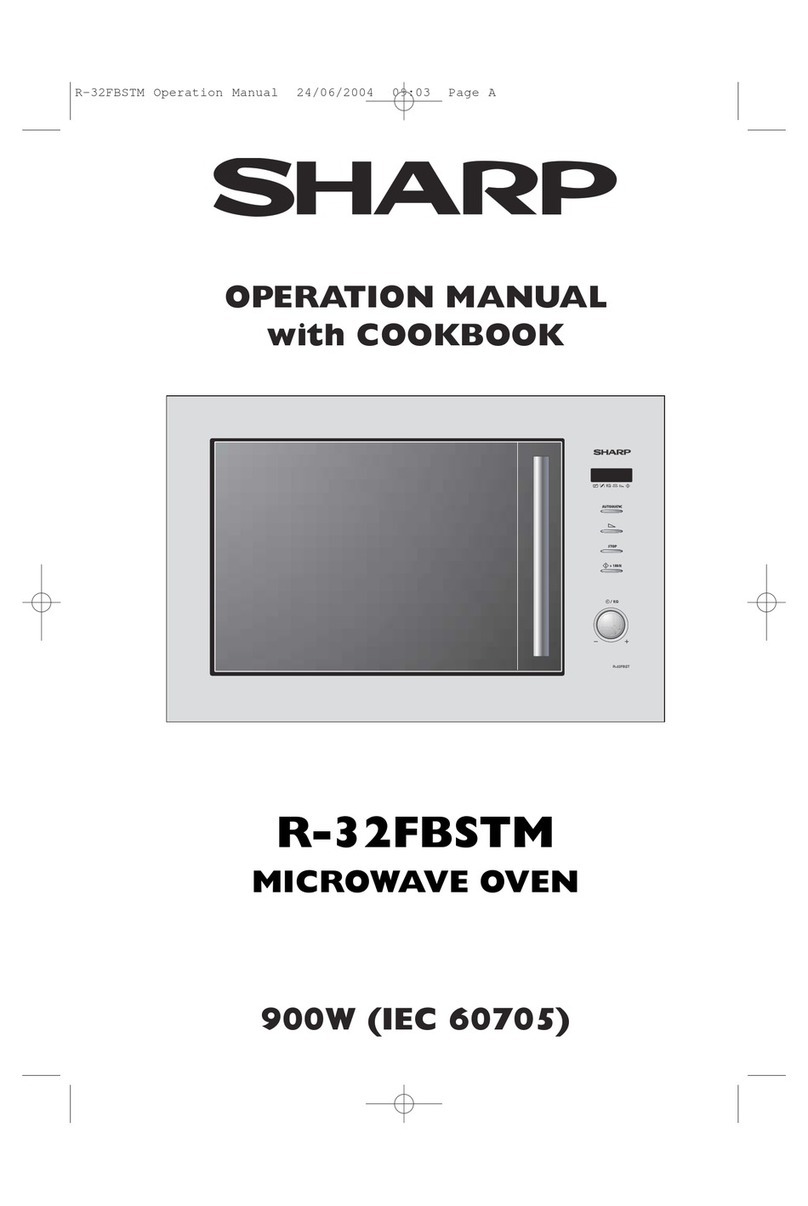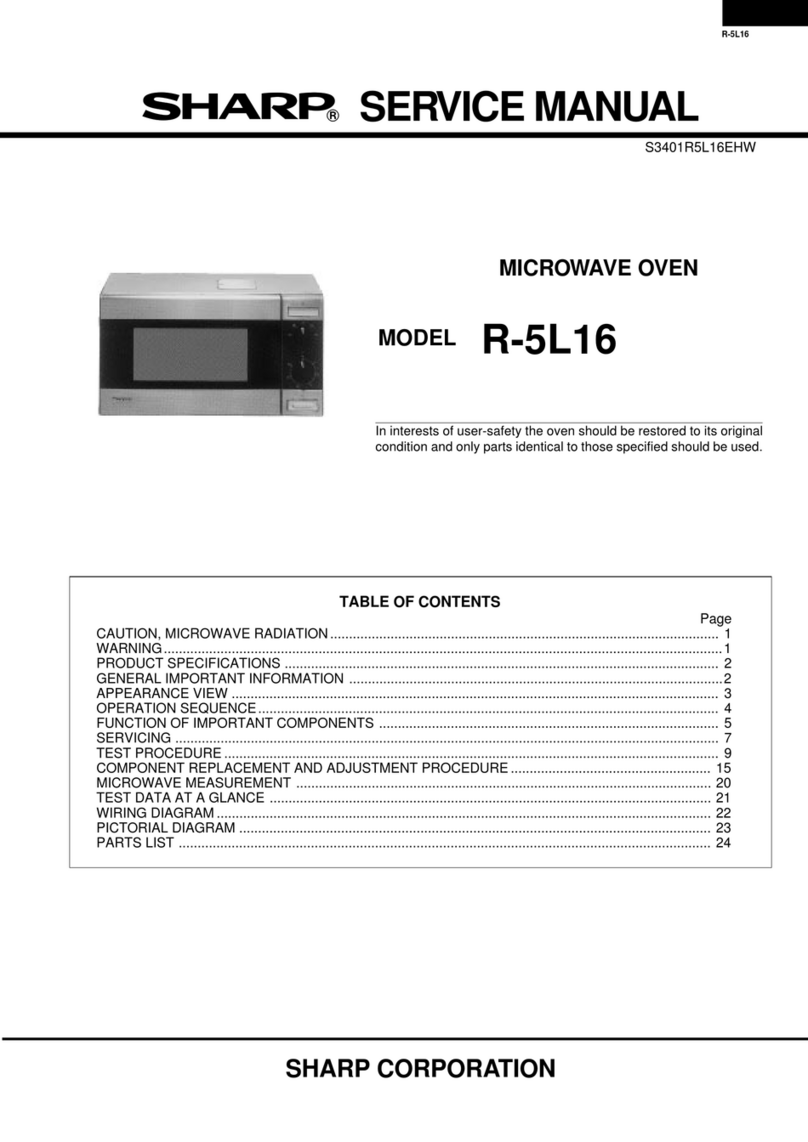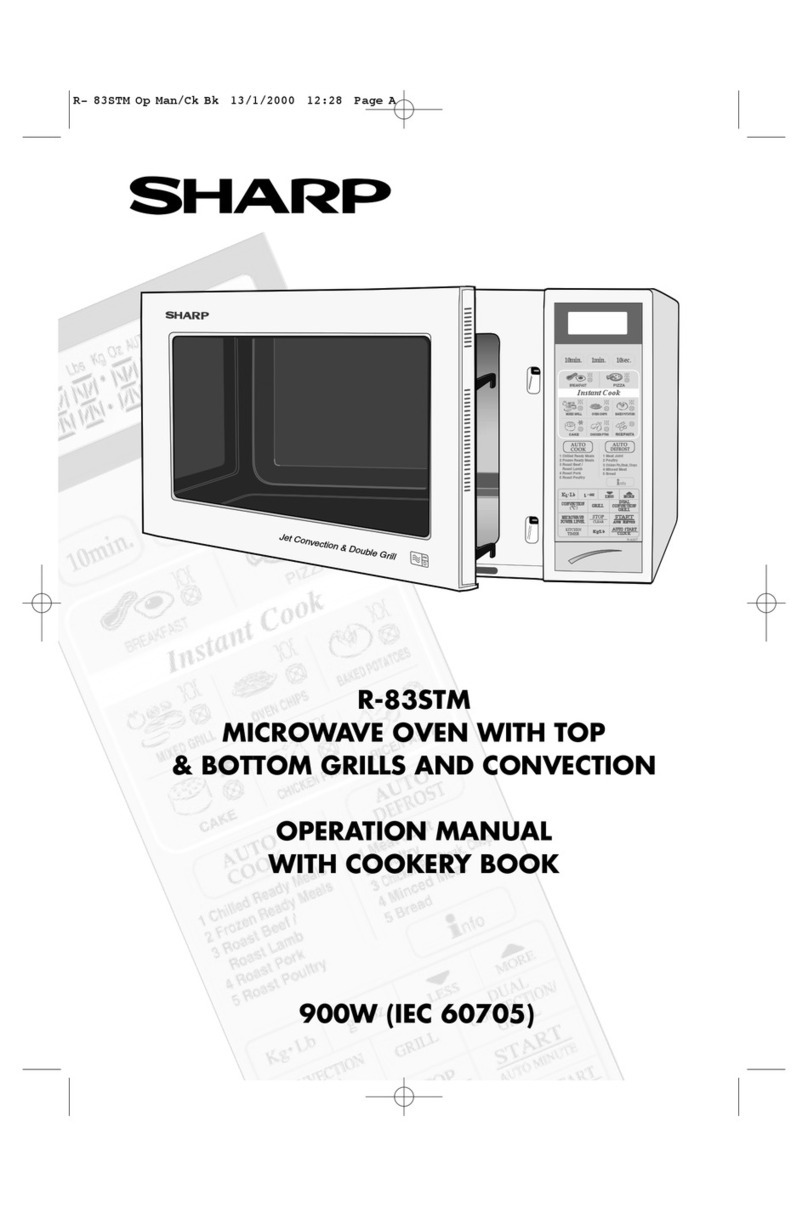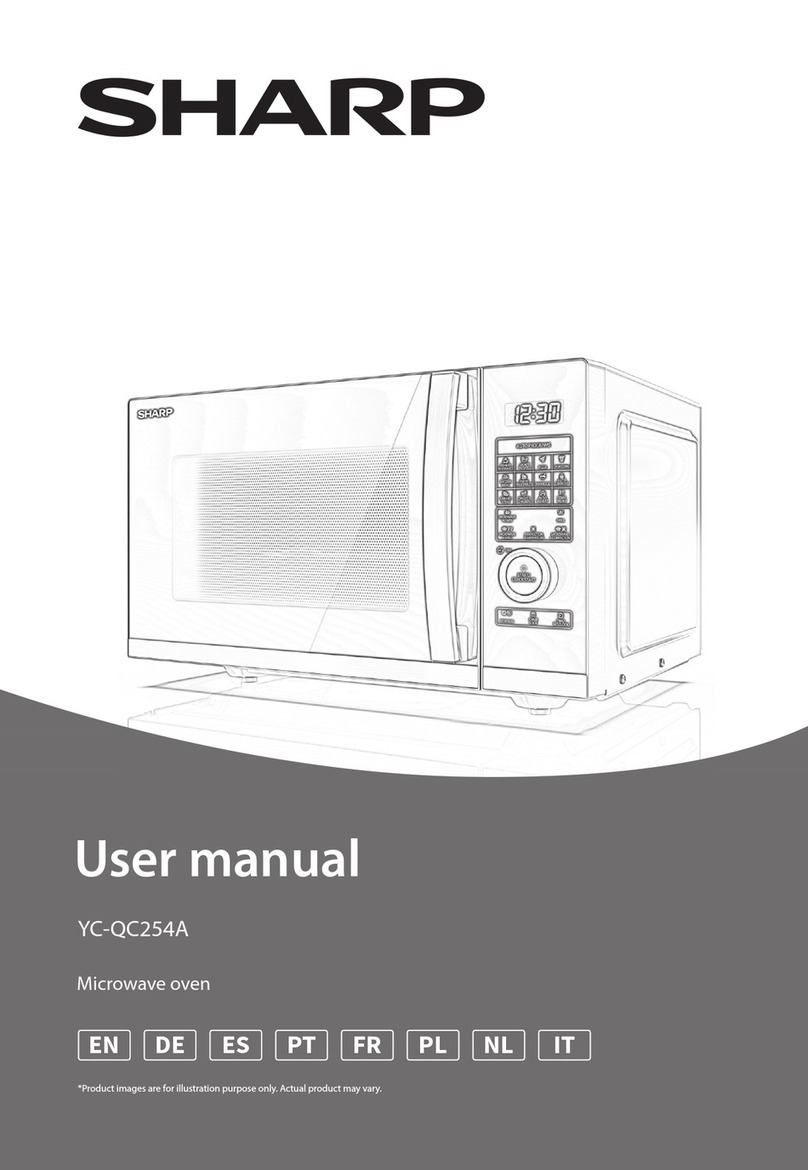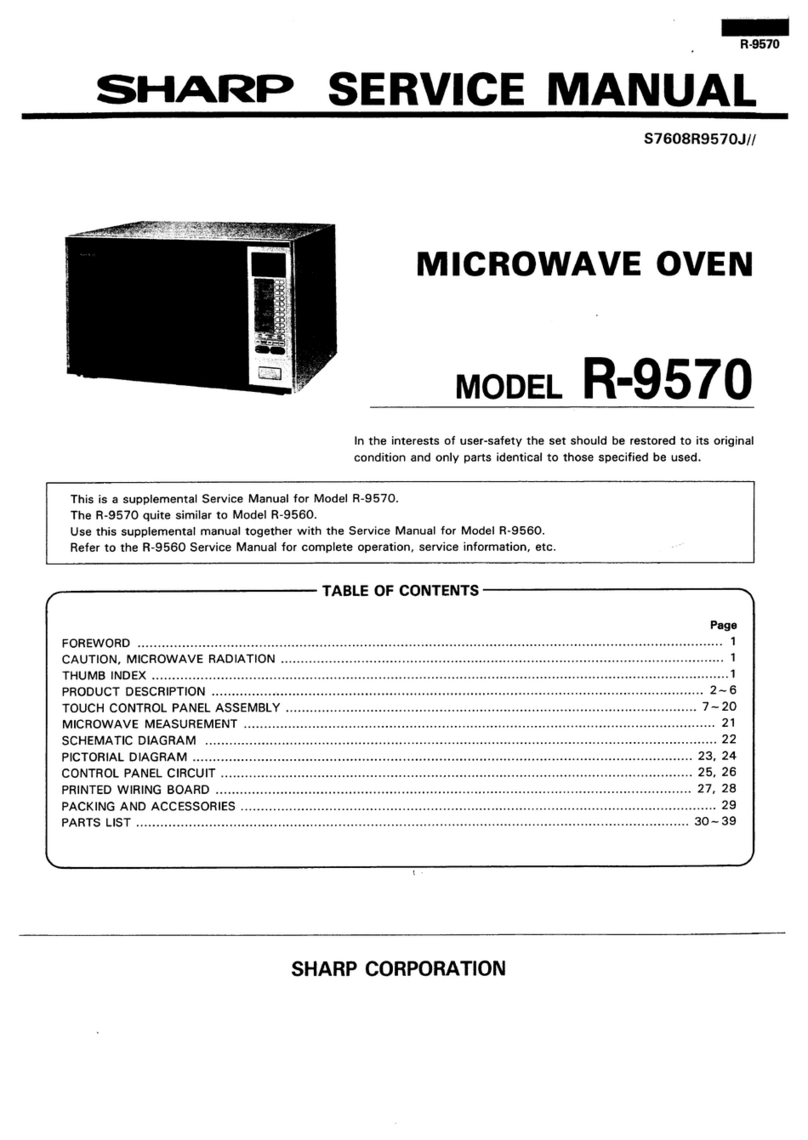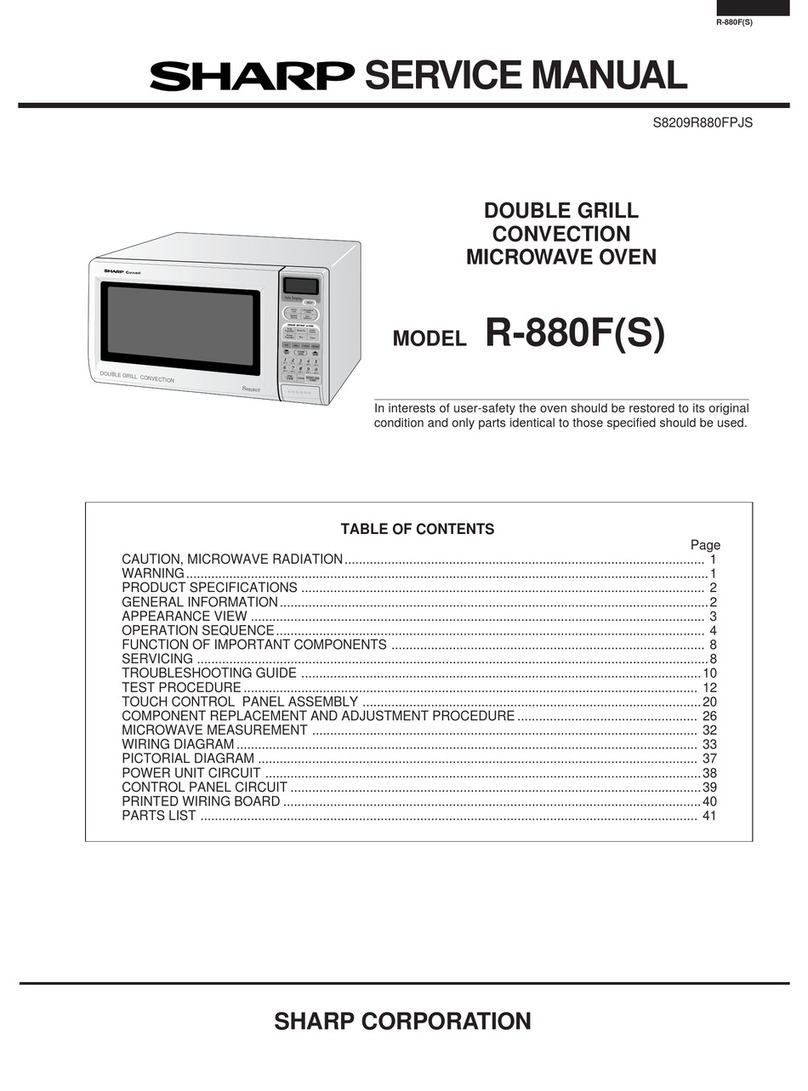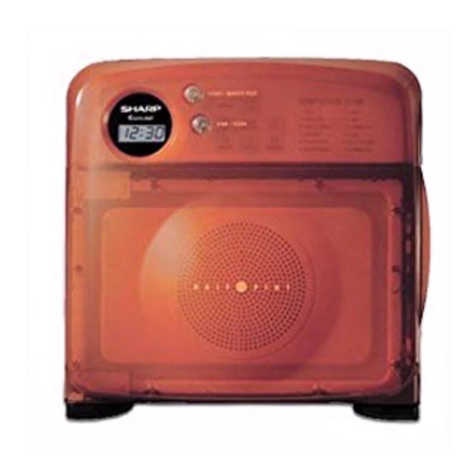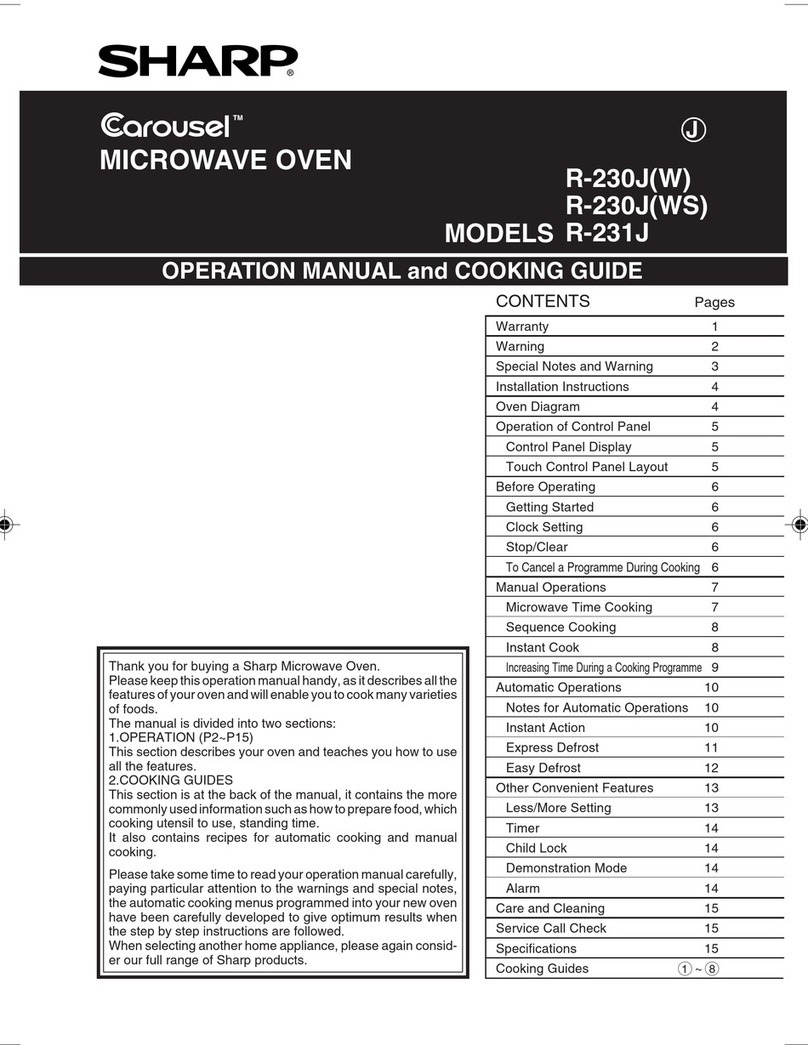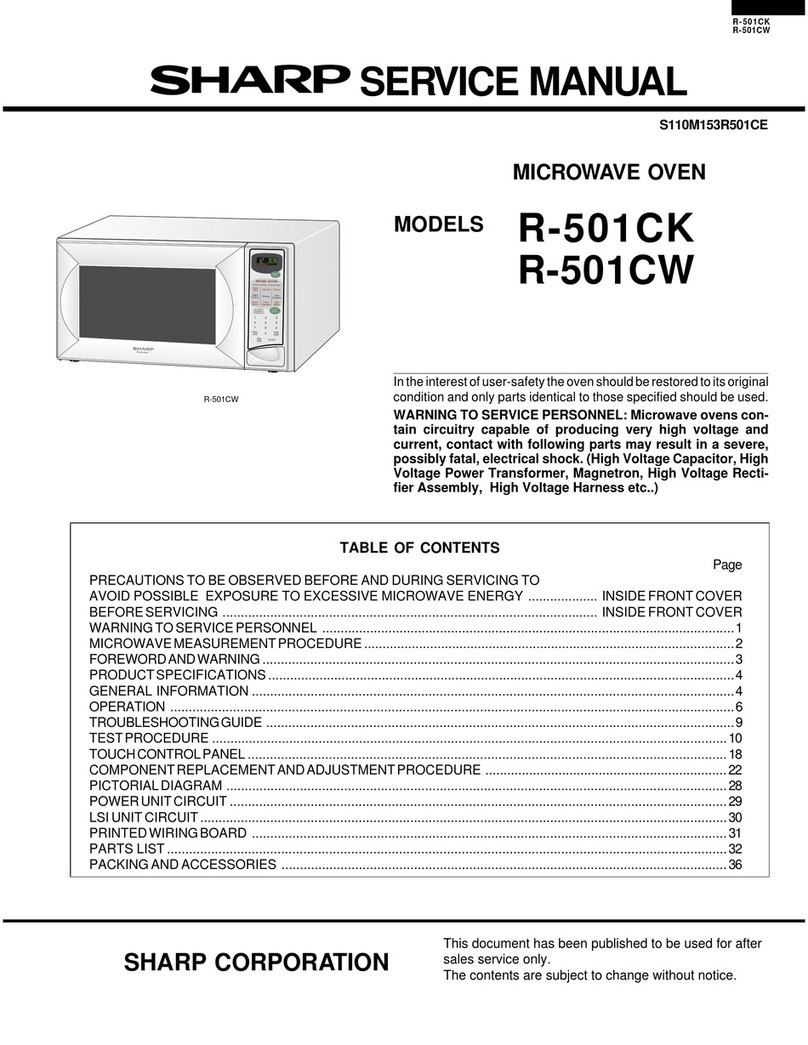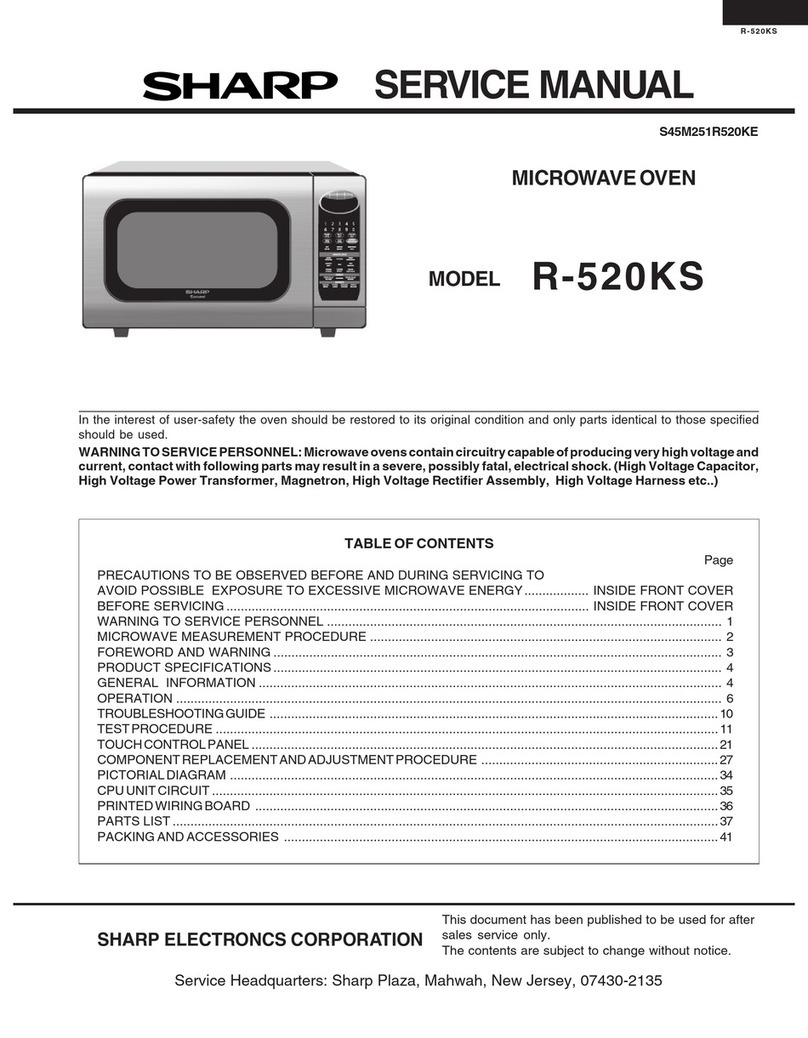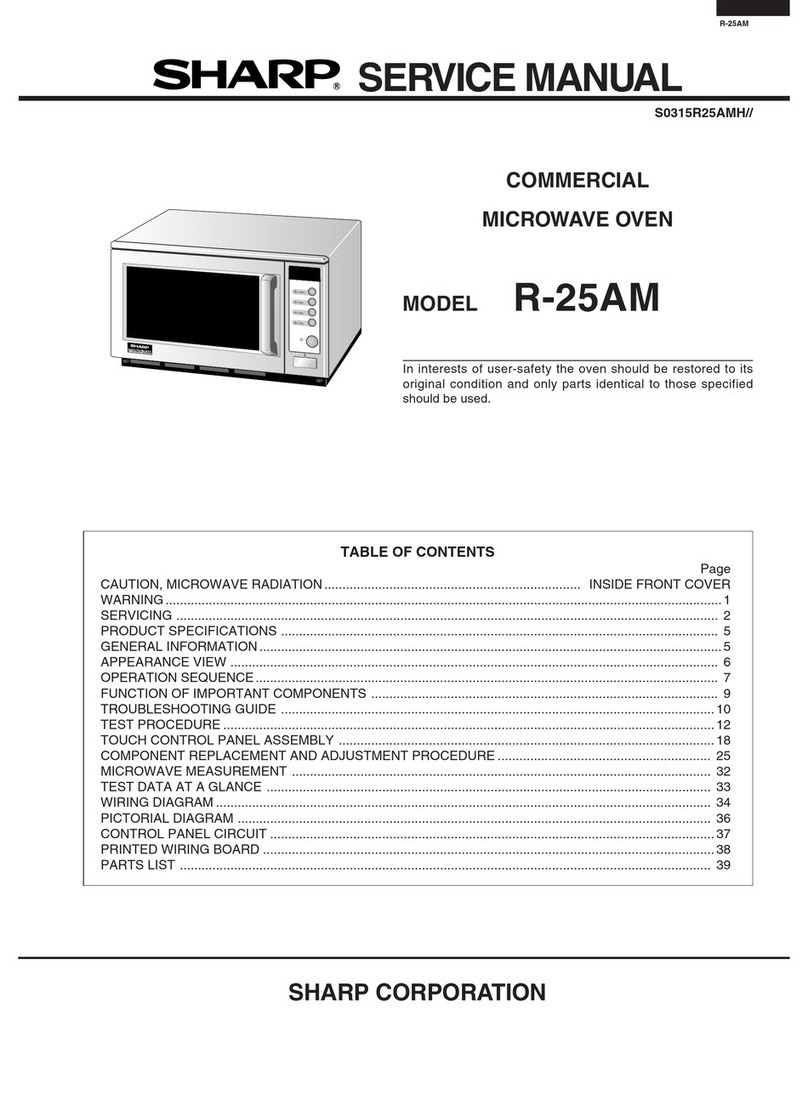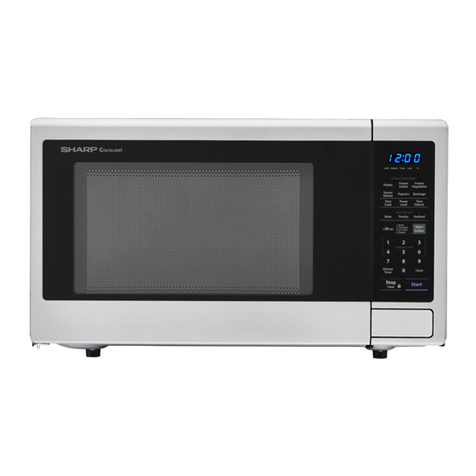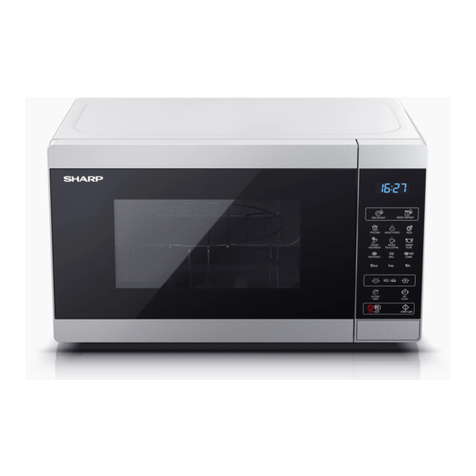
GB-6
ENGLISH
IMPORTANT SAFETY INSTRUCTIONS
READ CAREFULLY AND KEEP FOR FUTURE REFERENCE
operation which involves the removal of
a cover which gives protection against
exposure to microwave energy.
11. If the power supply cord of this appliance
is damaged, it must be replaced with
a special cord. The exchange must be
made by an authorised SHARP service
agent.
12. WARNING: Liquids and other foods
must not be heated in sealed containers
since they are liable to explode.
13. Microwave heating of beverages can
result in delayed eruptive boiling,
therefore care must be taken when
handling the container.
14. Do not cook eggs in their shells, and
whole hard boiled eggs should not be
heated in microwave ovens since they
may explode even after microwave
cooking has ended. To cook or reheat
eggs which have not been scrambled or
mixed, pierce the yolks and the whites,
or the eggs may explode. Shell and slice
hard boiled eggs before reheating them
in the microwave oven.
15. Utensils should be checked to ensure
that they are suitable for use in the oven.
See Page GB-17. Use only microwave safe
containers and utensils on microwave
modes.
16. The contents of feeding bottles and
baby food jars must be stirred or shaken
and the temperature checked before
consumption, in order to avoid burns.
17. The door, outer cabinet, oven cavity,
dishes, accessories and especially the
grill heating elements will become very
hot during operation.
18. Care should be taken to avoid touching
these areas. To prevent burns, always use
thick oven gloves. Before cleaning make
sure they are not hot. When heating
food in plastic or paper containers, keep
an eye on the oven due to the possibility
of ignition.
19. If smoke is emitted, switch off or unplug
the appliance and keep the door closed
in order to stifle any flames.
20.Clean the oven at regular intervals and
remove any food deposits.
1. This oven is designed to be used on a
countertop only. It is not designed to be
built into a kitchen unit. Do not place the
oven in a cabinet.
2. The oven door may become hot during
cooking. Place or mount the oven so that
the bottom of the oven is 85 cm or more
above the floor. Keep children away
from the door to prevent them burning
themselves.
3. Ensure there is a minimum of free space
above the oven of 30 cm.
4. This appliance can be used by children
aged from 8 years and above and
persons with reduced physical, sensory
or mental capabilities or lack of
experience and knowledge if they have
been given supervision or instruction
concerning use of the appliance in a
safe way and understand the hazards
involved. Children shall not play with
the appliance. Cleaning and user
maintenance shall not be made by
children unless they are older than 8 and
supervised
5. Keep the appliance and its cord out of
reach of children less than 8 years.
6. WARNING: Only allow children to use
the oven without supervision when
adequate instructions have been given
so that the child is able to use the oven
in a safe way and understands the
hazards of improper use.
7. WARNING: When the appliance is
operated in the GRILL/COMBI. and
CONV.(°C) modes, children should only
use the oven under adult supervision
due to the temperature generated.
8. WARNING: Accessible parts may
become hot during use. Young children
should be kept away.
9. WARNING: If the door or door seals
are damaged, the oven must not be
operated until it has been repaired by a
competent person.
10. WARNING: Never adjust, repair or
modify the oven yourself. It is hazardous
for anyone other than a competent
person to carry out any service or repair
